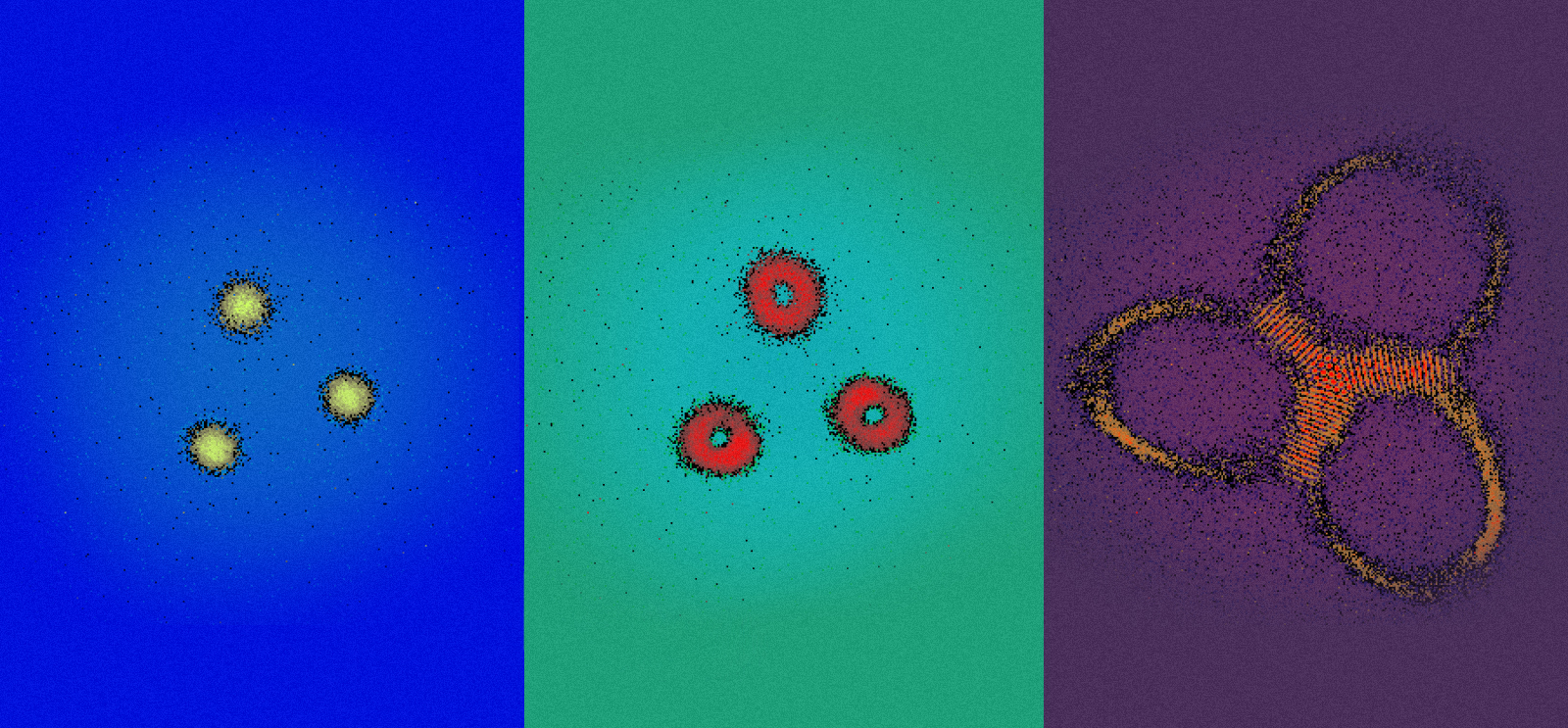
These false-color images show light-based quantum Hall material, created by shining infrared laser light at specially configured mirrors—an important step for the development of quantum technologies. (Images courtesy Nathan Schine, SM’14; Albert Ryou, SM’13; Andrey Gromov; Ariel Sommer; and Jonathan Simon)
Jonathan Simon blurs the line between matter and light.
Light and matter are distinct entities in classical physics. In the context of quantum mechanics, they are alike in that they both can act as a particle or a wave. Neubauer Family Assistant Professor of Physics Jonathan Simon and his lab have taken advantage of this similarity to explore quantum mechanics in matter by harnessing light.
Simon’s recent research deals with the quantum Hall effect, a variation of the Hall effect, named after its discoverer, physicist Edwin Hall. The Hall effect is a phenomenon in which electrons moving straight through a conductive material will deflect into a curved path when subjected to a magnetic field, creating a voltage across the material and affecting the material’s resistance. The quantum Hall effect is observed when a material in a powerful magnetic field and at very low temperatures shows a step-wise, rather than linear, change in resistance.
Two characteristics that solid-state quantum Hall materials exhibit are low electrical resistance and quantum entanglement, in which the state of one electron influences the state of the rest. These properties are promising for such applications as quantum computation.
Simon’s lab created a photonic (or light-based) quantum Hall material by shining infrared lasers at specially configured mirrors, creating the false-color images seen below. When the photons bounce between the mirrors—arranged in such a way to make the photons twist—their side-to-side motion parallels the electron behavior in solid-state quantum Hall materials.
Using advanced optical systems, the physicists also made the photons act like they were on the surface of a cone, a feat not yet achievable with electrons. This experiment led to the first observation of the quantum Hall effect in curved space. In conjunction with ongoing work in the Simon lab to induce the photons to collide with one another, it opens the door to creating synthetic materials from light.
